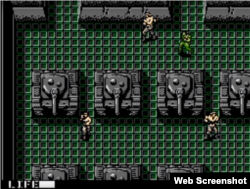On June 20, the Russian state news agency Interfax reported that Deputy Defense Minister Andrei Kartapolov, speaking during a parliamentary roundtable, cited the popular video game series Metal Gear as an example of projects of the U.S. Intelligence services to manipulate the “public consciousness and especially young people” against the Russian government.
According to The Moscow Times, he added that such projects were “aimed at encouraging active protest activity and dissatisfaction with the country's authorities among young people.”
In reality, the Metal Gear series is a product of Japan. The first game in the series was created in 1987 by video game designer Hideo Kojima, published by the Japanese company Konami, and intended for use with the Japanese MSX2 brand personal computer.
Metal Gear first garnered popularity in the U.S. via a port of the game for the Nintendo Entertainment System in 1988. In 1998, the release of Metal Gear Solid for the PlayStation game console made Metal Gear a household name worldwide. All told, Metal Gear is one of the top selling video games of all time.
Metal Gear was originally designed as a “tactical espionage game,” in which the player takes control of a single special operations operative who must infiltrate a heavily guarded military facility. Two unique features contributed to the game’s success. The first was its action movie-style plot: in the 1980’s, developed stories in video games were a novelty. The second was its gameplay, which focused on stealth and remaining undetected rather than taking down hordes of enemies. Throughout the series, the player must avoid alerting enemies or triggering alarms. It’s hardly what any reasonable person would call “encouraging active protest activity.”
As for dissatisfaction with authorities, the series’ plots do contain themes critical of governments, but that criticism is often aimed at all governments, including that of the U.S. One of the earliest examples comes in the second game, published in 1990, in which a defeated boss character tells the player he joined a terrorist group because a NATO air strike in the first game killed a number of innocent children. Metal Gear Solid 2: Sons of Liberty (2000) involves a plot that reveals the U.S. government is secretly controlled by a group of individuals known as “The Patriots,” who intend to use artificial intelligence to manipulate public perceptions.







